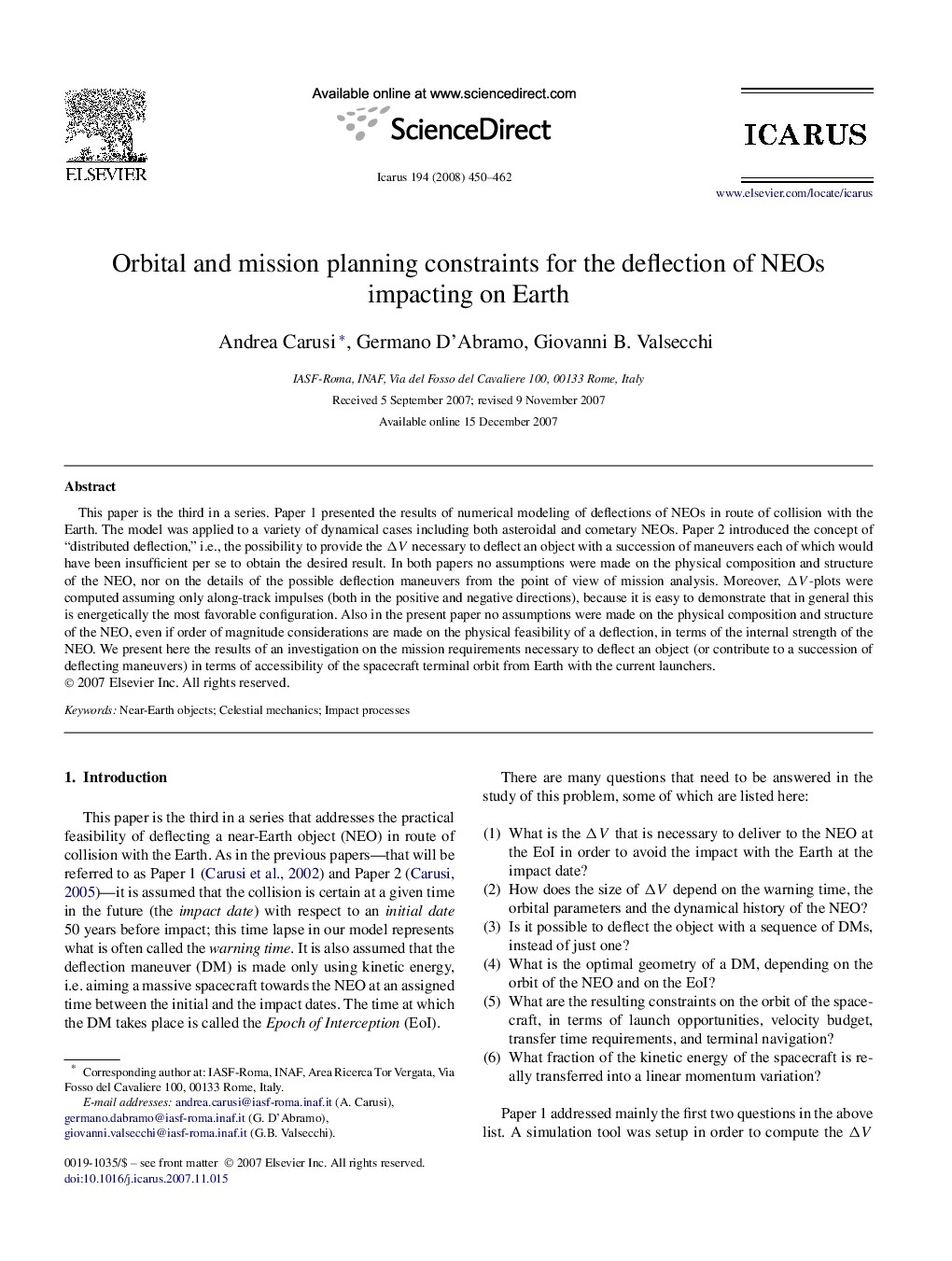| Article ID | Journal | Published Year | Pages | File Type |
|---|---|---|---|---|
| 1775159 | Icarus | 2008 | 13 Pages |
This paper is the third in a series. Paper 1 presented the results of numerical modeling of deflections of NEOs in route of collision with the Earth. The model was applied to a variety of dynamical cases including both asteroidal and cometary NEOs. Paper 2 introduced the concept of “distributed deflection,” i.e., the possibility to provide the ΔV necessary to deflect an object with a succession of maneuvers each of which would have been insufficient per se to obtain the desired result. In both papers no assumptions were made on the physical composition and structure of the NEO, nor on the details of the possible deflection maneuvers from the point of view of mission analysis. Moreover, ΔV-plots were computed assuming only along-track impulses (both in the positive and negative directions), because it is easy to demonstrate that in general this is energetically the most favorable configuration. Also in the present paper no assumptions were made on the physical composition and structure of the NEO, even if order of magnitude considerations are made on the physical feasibility of a deflection, in terms of the internal strength of the NEO. We present here the results of an investigation on the mission requirements necessary to deflect an object (or contribute to a succession of deflecting maneuvers) in terms of accessibility of the spacecraft terminal orbit from Earth with the current launchers.
